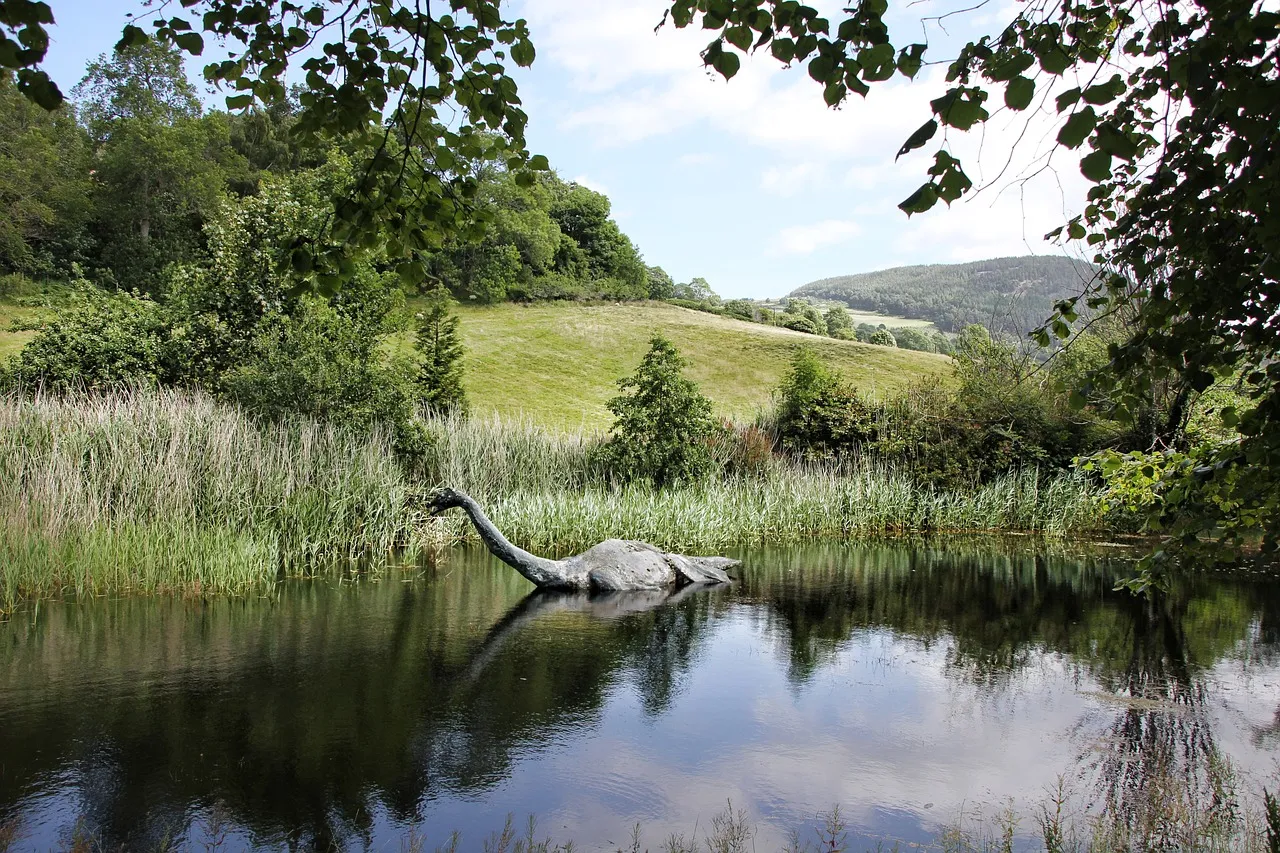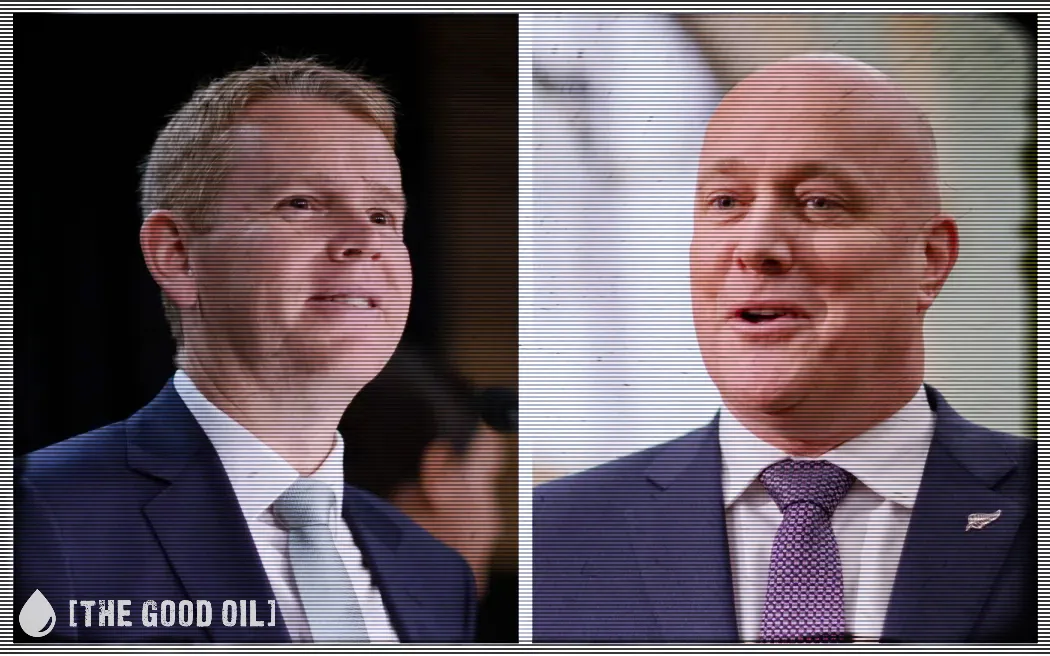Steven Tucker
Steven Tucker is a UK-based writer with over ten books to his name. His next, Hitler’s & Stalin’s Misuse of Science, comparing the woke pseudoscience of today to the totalitarian pseudoscience of the past, will be published in summer 2023.
This spring sees the 90th anniversary of the birth of the Loch Ness Monster as a modern-day media phenomenon. There had been local myths of mythological spirit-beings known as “kelpies”, or “water-horses” in the Loch for centuries. According to legend, St Columba is said to have miraculously exorcised one such beastie from the nearby River Ness in the 6th century; sceptics claim it was a rogue walrus.
Stories of an actual prehistoric plesiosaur-like being living in the Loch date back only to early 1933, however, following the previously remote lake’s opening up to the outside world with the creation of a new modern main road passing by the northern shoreline, a handy vantage point from which a new wave of outsiders would soon begin claiming their own monster sightings. Hence, a sceptic could well argue what is really being celebrated this year is not really the birth of Nessie, but the opening of the A82 from Glasgow to Inverness.
On May 2, 1933, the first major newspaper report on Nessie appeared in the Inverness Courier, concerning a husband and wife who had been driving along the newly finished road before being “startled” by a “tremendous upheaval on the loch” as a creature with “a body resembling that of a whale” suddenly appeared, transforming the previously calm waters into “a simmering cauldron” of terror.
The Courier had previously spent over 130 years in print without making a single serious mention of any monster in Loch Ness. Yet, by that summer, news of Nessie had become so extensive that media worldwide were eagerly reporting another motoring couple named the Spicers had now seen Nessie venturing outside her natural watery environment, crossing the road with a bloodied lamb hanging from her jaws.
How long before she sped down the new road herself, and ate central Glasgow?
Nessie or Nazi?
Undoubtedly, Nessie is good for tourism, as a globally-known symbol of Scotland itself. As such, you may expect the nation’s current governing Scottish National Party (SNP) to embrace her. Not so. To the SNP, Nessie is a mere collaborationist tool of English imperialism in the country, a sort of reptilian Caledonian Vidkun Quisling – or so reports have implied.
In March 2022, Scottish media broke the news that the SNP had supposedly created a 17-page Social Studies lesson plan for use in the nation’s secondary schools, which would use Nessie as a tool to ruthlessly indoctrinate 11-14-year-olds with anti-English propaganda. Quotes were extracted from the document claiming Nessie was a living symbol of the “ambivalent position that Scotland holds in the Union” between it and England.
As the SNP’s whole raison d’être is facilitating Scotland’s independence, the apparent implication was that the Monster was to be used to urge impressionable kids into one day voting to break up Britain. Quotes suggested Nessie was just being used by arrogant Londoners to imply Scots were ignorant, primitive children who believed in dragons and so had to be ruled from afar by sensible adults:
“The very idea of a prehistoric monster in a loch affirms the stereotypical idea that Scotland – by contrast to England – is a rural wilderness, perhaps one bypassed by progress … The monster’s depiction [in the media] suggests that although there was a ‘primitive’ wilderness before the state of Britain [was established by the Act of Union of 1707], the modern state has the ability to control it using advanced knowledge and technologies.”
Conservative MSP (Member of the Scottish Parliament) Russell Findlay soon raised questions in the Scottish Assembly Building, accusing then-SNP Education Secretary Shirley-Anne Somerville of “an attempt to brainwash pupils” and “attempt[ed] exploitation of our beloved Nessie”, before requesting “the removal of such embarrassing and ridiculous propaganda from our curriculum”.
In response, Somerville denied the SNP were abusing Nessie to facilitate Scottish independence at all, arguing the lesson-plans had been made by independent educators, and that their use in schools was in no way compulsory.
The Land That Time Forgot: Scotland
The lesson plan in question, “How Others See Us In Film: Scotland in the World – Learning Journey” is available online. That its web address includes the “education.gov.scot” tag suggests it does enjoy at least some quasi-official government imprimatur …
It is a Media Studies resource, encouraging students to consider “a range of “fantasy” Scotlands constructed by film makers from around the world.” It is asserted that, when making the cartoonishly stereotypical Scottish musical Brigadoon (1954), its Hollywood producer scouted locations in Scotland, but rejected them all as no place there “looked enough like Scotland”, so he filmed it in the United States instead. Hence, foreign directors are just recreating their own imaginary internal versions of Scotland in their movies, not the real one, teens are to be taught.
Movies about Loch Ness are particularly telling, says the lesson plan, depicting Scotland as positively prehistoric, only made inhabitable by English technological ingenuity. The first Nessie film, 1934’s The Secret of the Loch, used the newly complete A38 as a subliminal secret agent of Empire:
“… the ease with which English scientists and reporters are shown to be able to travel to Scotland by train, motor around the loch by car and report back their stories by telephone … illustrates that Scotland is a fully integrated part of the modern state of Britain … [Initially] Nessie was less a Scottish monster exactly than it was a British one … a symbol of the ability of the modern state to use its technological and scientific prowess to survey the entirety of its borders, even to the deepest depths of Loch Ness.”
In later films, though, Scotland has by now been colonised by another, much greater, imperial superpower: the US. In the 1983 home-made short The Loch Ness Monster Movie, a claymation Nessie destroys Edinburgh after Yankee infidels try and kidnap her away to “Marine Fantasyland, Florida”. According to the lesson plan, this was intended by the film’s creator as a metaphor asking who really owns Scotland’s precious natural underwater resources, namely North Sea oil – the Americans who extract it, the English who sell it, or the Scots who have it stolen away from them?
Also underwater today in Scotland are British nuclear submarines. In the event of 1980s Cold War nuclear conflict, Scotland would therefore likely find itself nuked by Moscow, for which Nessie’s plasticene rampage through Edinburgh is to be explained to students as an anti-NATO political allegory – another key SNP policy being to kick the British nuclear subs out, of course.
So, the Godzilla-like city-levelling Nessie is here presented as being “again a global citizen”, not a British or American subject, just like the SNP would desire. Subjugated beneath American-led NATO domination, Nessie “should reconsider its position in Britain in order to find a different place in the world”, children should be told. For “Nessie” here, I think we can read “Scotland”.
Strangely, the document fails to provide a highly partisan separatist political exegesis of popular 1980s BBC kids’ cartoon series The Family Ness, but perhaps that will be left for Scottish Sixth Formers to discover for themselves later.
Political dinosaurs
This was not the first time Nessie has been linked to anti-Scottish racism. In November 2014, following his lack of success in persuading citizens to vote for freedom from the hated English yoke in that year’s Scottish Independence Referendum, a large caricature effigy of the SNP’s then-leader, Alex Salmond, was ritually burned as part of the annual Bonfire Night celebrations held in the English town of Lewes.
Going down in flames alongside him was a figure of Nessie wearing a stereotypical Tam o’ shanter cap, which led to rather oversensitive online complaints that the burning was a bigoted example of “anti-Scottishness” and thus “Racist”. Sussex Police felt obliged to investigate in order to “establish whether or not any crime may have been committed.” It not yet being illegal to torch giant papier-mâché plesiosaurs, even under ill-drafted UK Hate Crimes legislation, Sussex Police failed to make any arrests for race-crimes against aquatic reptiles, but it is surely only a matter of time.
Out of Africa
Nessie is not the only dinosaur-like animal dubiously said to roam the world today. Central sub-Saharan Africa is alleged to harbour several such living wonders, from the mokele-mbembe sauropod-type creature and mbielu-mbielu-mbielu stegosaurus-clone to the Kasai Rex, a T-Rex lookalike of which several hoaxed photographs exist. But are these more examples of white, Anglo-Saxon colonialist racism?
Legends of African dinosaurs first emerged during the early 1900s, when much of the continent, just like Scotland today, was ruled from afar by non-native governments. According to some contemporary critics, like palaeontologist Darren Naish, this merely reflected “a sort of lazy, naïve view … whereby all of Africa was imagined as a homogenous dark continent stuck in the Stone Age, inhabited solely by spear-wielding jungle-dwellers, and where little had happened since the Mesozoic Era.” Unlike ever-advancing London, colonial-era white men asserted, “Africa has scarcely changed since the time of the dinosaurs.”
Explorer Dr Roy P. Mackal’s 1987 book A Living Dinosaur? In Search of Mokele-Mbembe, describing his 1980s expeditions seeking non-extinct African megafauna, features a painted cover-image of stereotypical semi-naked black tribesmen hurling pathetic little spears ineffectively into the back of a huge diplodocus-type animal.
If Mackal had saved some money and just driven up to Loch Ness via the A82 instead, might he have encountered topless, kilt-wearing Scotsmen tossing sharpened cabers at their own giant living fossil similarly?









